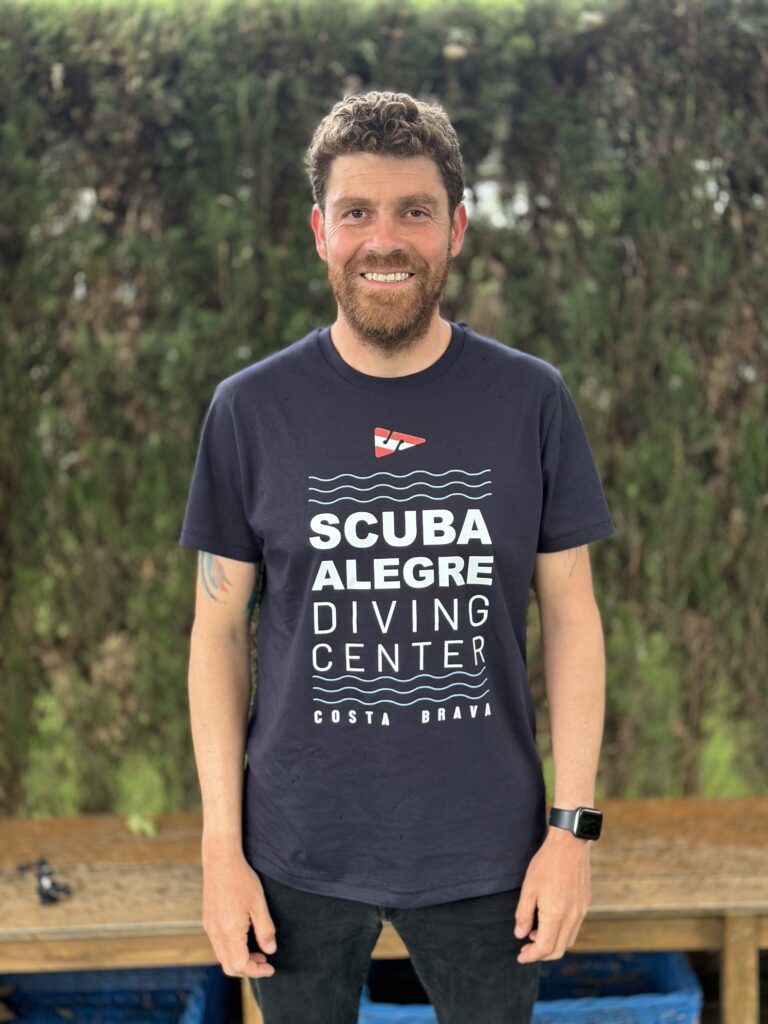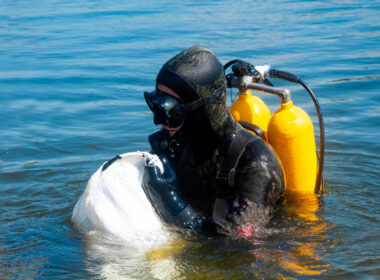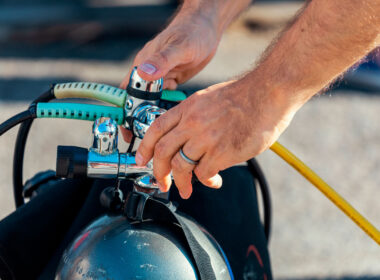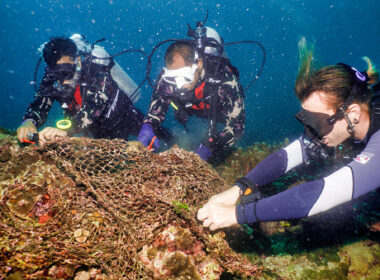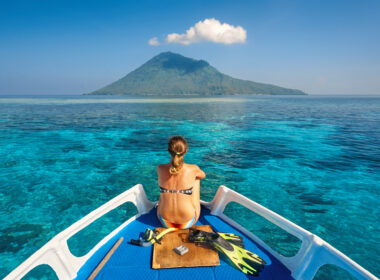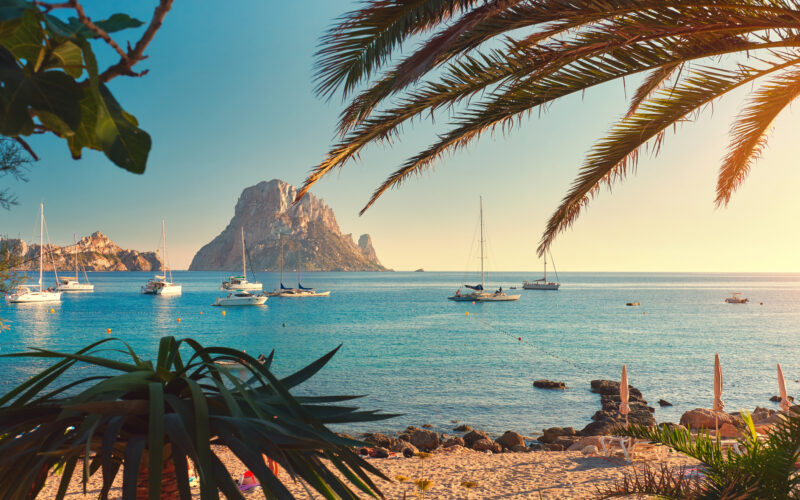Located where the Atlantic Ocean meets the Mediterranean Sea, Spain offers the perfect diving vacation combination.
From coastlines bordering fantastic culture-filled cities to the Canary Islands of the Atlantic Ocean bordering the northwest coast of Africa or the Balearic Islands in the Mediterranean, Spain has something to offer everyone!
Diving is pretty much available throughout the extensive coastline of Spain’s mainland as well as its islands.
Did you know diving insurance is mandatory when diving around Spain? Get covered here.
Where to Go Diving in Spain
Spain has some beautiful beaches, coves, reefs and islands, there are lots of places to choose from as well as large airports to fly into, whether visiting somewhere on the mainland or traveling to the Balearic or Canary Islands. If you have no idea where to get started with your diving trip to Spain, here are a few must visit locations:
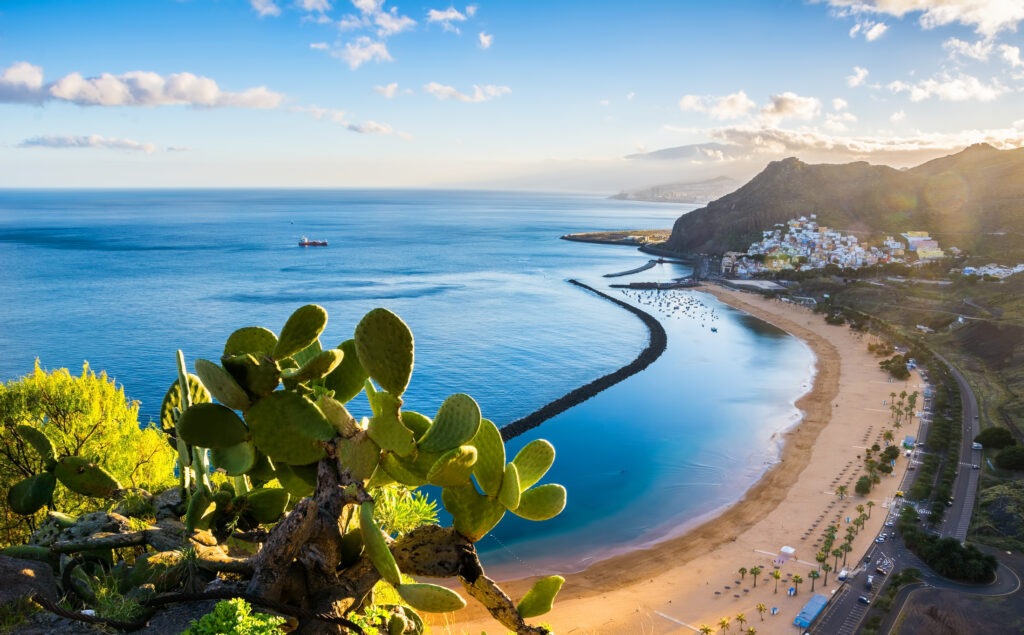
The Canary Islands:
The Canary Islands offers 8 inhabited islands to explore, you can settle on one or ferry between Tenerife and Gran Canaria, serving as main transport hubs. Positioned off Africa’s coast, the islands boast a sub-tropical climate with water temperatures of 16 to 26 degrees Celsius, fostering diverse marine life. From nudibranchs to barracudas, encounter a rich underwater ecosystem during dives. Volcanic eruptions have shaped the terrain, creating caves, arches, and walls. With visibility up to 30 meters, diving is accessible for all levels, reachable by shore or boat. Dolphin encounters during boat trips add to the enchanting Canary Islands diving experience.
Discover more about the Canary Islands here.
Tarifa:
The most southern town on mainland Europe, nicknamed “the windy city” and well known by kite surfers and surfers. This part of the Costa de la Luz is where the Mediterranean Sea meets the Atlantic Ocean, providing an interesting variety of underwater life as well as conditions. You can enjoy calm, crystal clear waters one day and rough, choppy waters the next. The water temperature is also changeable as the strong winds can also cause the cold deep waters to replace the surface waters that have been warmed by the sun, causing an overnight drop in temperature.
Protected marine parks with rocky reefs, extensive algae meadows, cave systems, shipwrecks and a wide range of fauna provide plenty of interesting dive sites. There is always a chance for a nice surprise visit of whales, dolphins, loggerhead turtles, or sharks as this Strait is along their migratory journey between warmer and colder waters.
Typical fauna sightings in Tarifa include grouper, snapper, wrasse moray eels, octopus, squid and nudibranch.
Diving is available for all levels, but some of the more interesting dive sites, especially the wrecks are only accessible for more experienced divers and those trained to dive deeper than 20 meters.
Cabo de Gata:
A bit further along the coast from Tarifa in the Costa de Almeria this natural marine reserve is a gem for scuba divers and snorkelers alike. Receiving its Unesco Biosphere Reserve status in 1997 this cape has become one of the wildest and most untouched places of the Mediterranean Sea. Sea grass and rocky cliffs provide great habitats for all sorts of marine critters. A great location for macro lovers to spend hours searching for nudibranchs and sea horses, or just look around and admire the large fish schools of snapper, groupers and barracuda. In certain times of the year you might spot a group of eagle rays passing through.
The different bays around the cape provide for relaxing sheltered diving and dive sites can be reached by shore or within a short 5 to 20 minute boat ride. Most centers offer morning and afternoon dives with a return to the mainland in between.
Columbrete Islands:
The Islas Columbretes combine a group of islets and reefs located off the coast of Castellón. These islands are the remnants of a volcano and provide a fantastic home to plenty of flora and fauna. The most interesting life is found below the surface. A complex topography of rocky bottoms, Maerl composed of calcareous algae, overhangs, and sea grass meadows provide sheltered breeding grounds for marine life. Huge fish schools, giant lobster, octopus and beautiful red corals thrive here due to being protected from the fishing industry.
The water visibility around the islands tends to be clearer than on the mainland, offering up to 20 meters vis! To dive around these islands you can book a day trip from Castellón and it can take from 1,5 to 2 hours to reach by boat. Common fish species to see here include giant mussels, sea breams, moray eels, damselfish, goatfish, scorpion fish, barracuda, corals, sponges, sting rays and very large species of grouper and lobster.
Dive tours expect a minimum level of experience and you are required to show proof or your diving ability.
Costa Brava and Pyrenees:
The perfect blend of Mediterranean reefs and ice diving! The most famous diving in this area can be found at Medes Islands, a renown nature marine reserve, here you can find interesting swim throughs and caves, gorgonian corals and lots of marine life. In the right season you might be lucky enough to encounter rays or sunfish. Along the whole coastline of Costa Brava you will find a wide variety of dive sites suitable for all levels. Typical fish life you might find here can include giant groupers, barracuda, seahorses, and more! Further North you will find the Pyrenées mountain range, here there are an abundance of lakes which make interesting ice dives in the winter months.
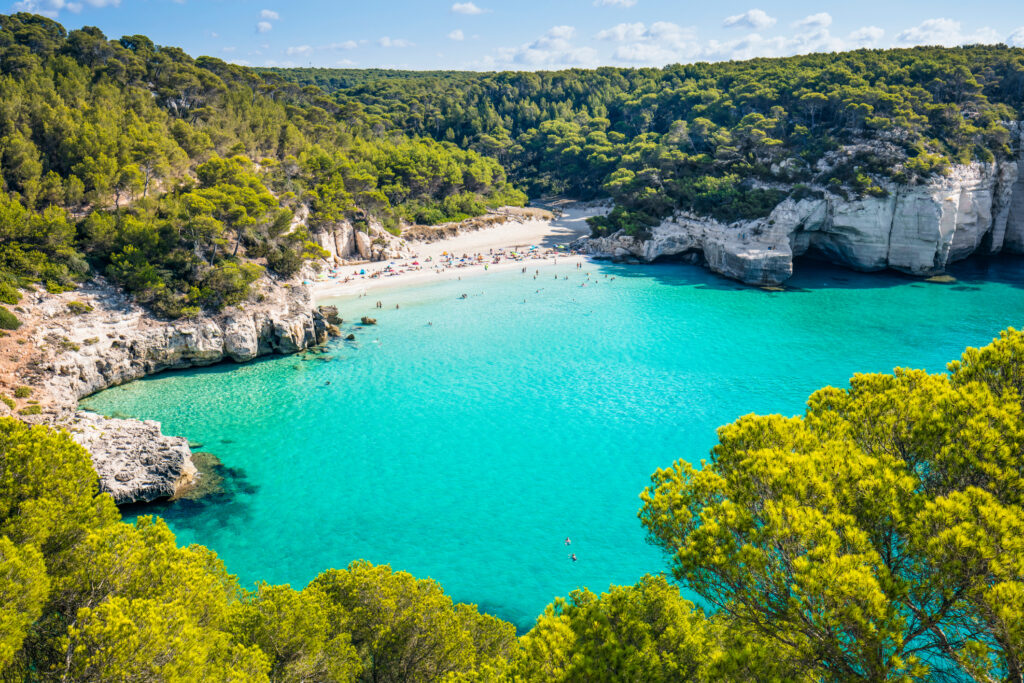
Balearic Islands:
Dive beneath the tranquil waters of the Balearics to discover remains of ships and artifacts from different eras. Also a fantastic destination for lovers of cave diving and underwater tunnel systems. Many caves have air pockets where you can ascend and admire incredible stalactites. caves , tunnel-systems, shipwrecks. Accessible to all, learn to dive in calm sites or venture through narrow passageways before reaching grottos dripping with stalactites. Dive along steep vertical walls and enjoy some healthy marine reserves, if you are lucky you may get to encounter eagle rays or stingrays, barracuda, large grouper and lobster. When diving from Formentera the dive center you use may also offer dives along the coast of Ibiza and if diving from Ibiza you may visit sites from Formentera. Menorca and Mallorca are further north and offer some interesting marine reserves and vertical walls. Diving here is great for all levels.
Cantabrian Sea:
The Costa verde providing access to the Cantabrian Sea is one of the lesser known diving spots in Spain. Due to the sea movement and erosion, here you will find lots of underwater caves and tunnels as well as overhangs and different rocky formations. There are lots of dive sites just a short distance from the shore and those suitable for beginners. Due to its location in the Atlantic Ocean, the sea can be rough and challenging, which can turn an easy dive site into a more difficult one due to surface and underwater conditions and low visibility.
For the more advanced divers, there are two famous wrecks, located next to each other the “Rio Miera” and the “Skottland” here the bottom of the wrecks lie at just below 40 meters.
Whats your budget?
Whether you’re a budget traveler seeking affordable adventures, a mid-range explorer looking for a balance of value and quality, or a luxury seeker craving opulent experiences beneath the waves, Spain has something spectacular to offer. Let’s dive into the different areas suited for each budget range:
Best for Budget Travelers: Costa Brava
Nestled in the northeastern corner of Spain, the Costa Brava region boasts a rugged coastline with crystal-clear waters and an abundance of marine life. Diving here is not only affordable but also incredibly rewarding. Budget-conscious travelers will find reasonably priced dive operators offering guided dives and equipment rental services. Explore colorful reefs, underwater caves, and shipwrecks teeming with marine biodiversity without breaking the bank.
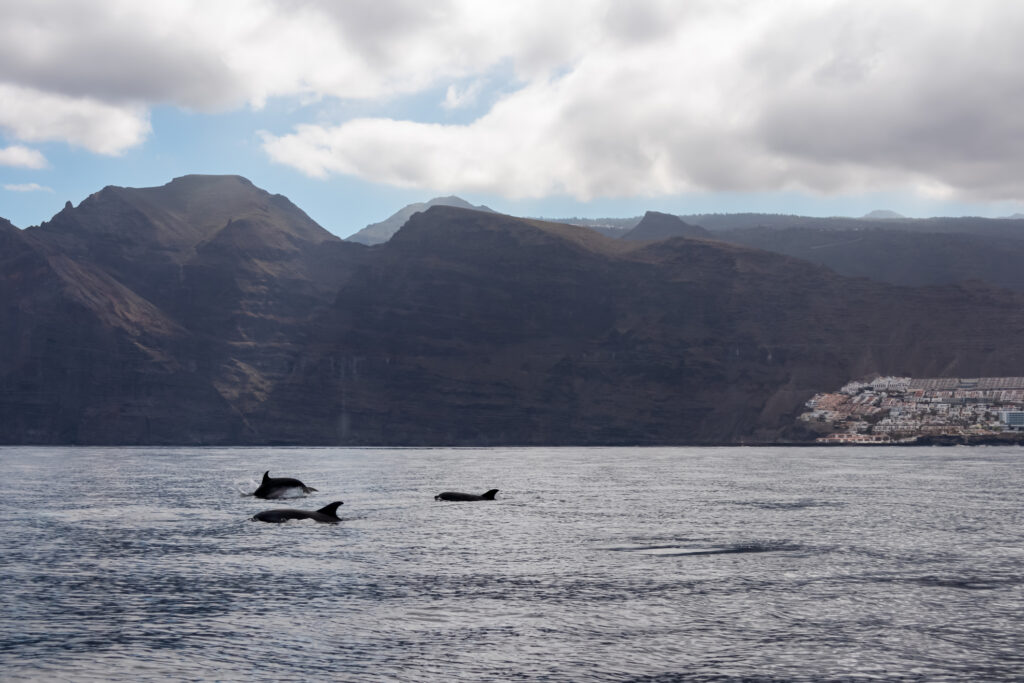
Best for Medium Budget: Canary Islands
For those with a bit more to spend, the Canary Islands offer a perfect blend of affordability and quality diving experiences. With several islands to choose from, including Tenerife, Gran Canaria, and Lanzarote, divers can explore volcanic underwater landscapes, encounter majestic marine species such as rays, dolphins, and turtles, and dive into vibrant coral gardens. Dive resorts and centers here cater to divers of all skill levels, providing professional guidance and top-notch equipment.
Best for Luxury Travelers: Balearic Islands
Luxury travelers seeking unparalleled diving experiences amidst breathtaking scenery will find their paradise in the Balearic Islands. Ibiza, Mallorca, and Menorca boast some of the Mediterranean’s most exclusive dive sites, where azure waters meet dramatic underwater seascapes. Dive into underwater caves, swim alongside majestic seamounts, and discover hidden treasures beneath the waves. Luxury dive resorts and private charters offer personalized services, gourmet dining experiences, and luxurious accommodations for the ultimate indulgence.
No matter your budget, Spain offers a diverse array of diving destinations that promise unforgettable adventures beneath the surface. Whether you’re exploring the rugged beauty of Costa Brava, the volcanic landscapes of the Canary Islands, or the luxurious seascapes of the Balearic Islands, DiveAssure ensures that your diving experience in Spain is safe, enjoyable, and truly unforgettable.
Best locations for Beginnners or Advanced Divers and Specialised Dives
Best for Beginner Divers: Costa del Sol
The Costa del Sol, located in the southern region of Spain, offers ideal conditions for beginner divers to take their first plunge into the underwater world. With its calm, clear waters and gentle currents, this area is perfect for novice divers to gain confidence and experience. Dive sites along the coastline feature shallow reefs abundant with colorful marine life, providing an excellent environment for introductory dives and diver training courses.
Best for Advanced Divers: Costa Blanca
For experienced divers seeking adrenaline-pumping adventures and challenging dive sites, the Costa Blanca on Spain’s southeastern coast is the ultimate destination. Known for its deep drop-offs, underwater pinnacles, and strong currents, this region offers exhilarating dives for advanced divers. Explore submerged rock formations teeming with large pelagic species, drift along sheer walls adorned with vibrant corals, and encounter thrilling encounters with sharks, barracudas, and other apex predators.
Best for Wreck Dives: Costa Dorada
The Costa Dorada, situated along the northeastern coast of Spain, is a haven for wreck diving enthusiasts. This region boasts a rich maritime history and is home to numerous sunken ships and artificial reefs waiting to be explored. From ancient Roman wrecks to World War II-era vessels, wreck diving in Costa Dorada offers a glimpse into the past and an opportunity to witness marine life thriving amidst the wreckage.
Best for Cave/Cavern Diving: Costa de la Luz
The Costa de la Luz, on Spain’s southwestern coast, is renowned for its captivating cave and cavern diving experiences. Explore intricate underwater cave systems, swim through submerged tunnels, and marvel at stunning rock formations illuminated by the sun’s rays filtering through the water. With its clear visibility and unique geological features, Costa de la Luz provides an unforgettable adventure for cave diving enthusiasts seeking to explore the hidden wonders of the underwater world.
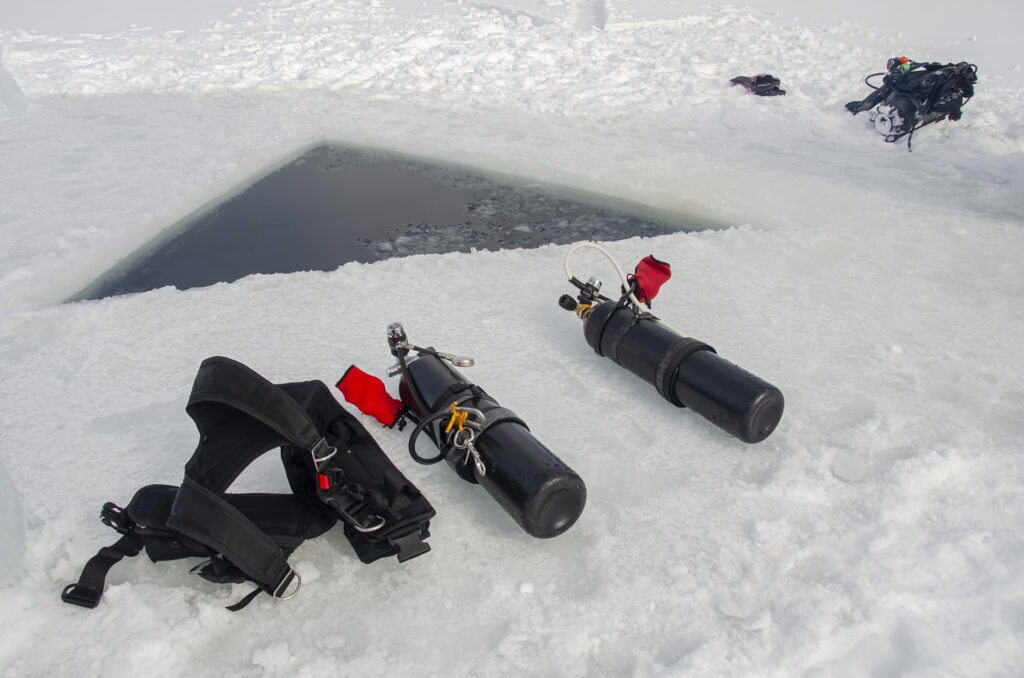
Best for Ice Diving: Pyrenees Mountains
While Spain may not be known for its icy waters, adventurous divers can experience the thrill of ice diving in the stunning Pyrenees Mountains. During the winter months, frozen lakes and rivers offer unique opportunities for intrepid divers to explore the surreal beauty beneath the ice. Dive beneath the frozen surface to discover a world of tranquility, where shimmering ice formations and ethereal light create a truly magical underwater experience unlike any other.
Spain – A travel destination filled with culture, beautiful landscapes, interesting marine life and moderate sea temperatures, Spain is a hot destination for divers, especially those seeking an affordable diving holiday and wanting to combine their vacation with on land activities.
No matter where you are diving – Dive Safe and get covered with our DiveAssure diving accident and travel plans
To gain a more personal perspective from an experienced diver in Spain, we invited Sebastian Peña Lambarri, the owner of Scuba Alegre Dive Center in Costa Brava, for an interview to share his insights.
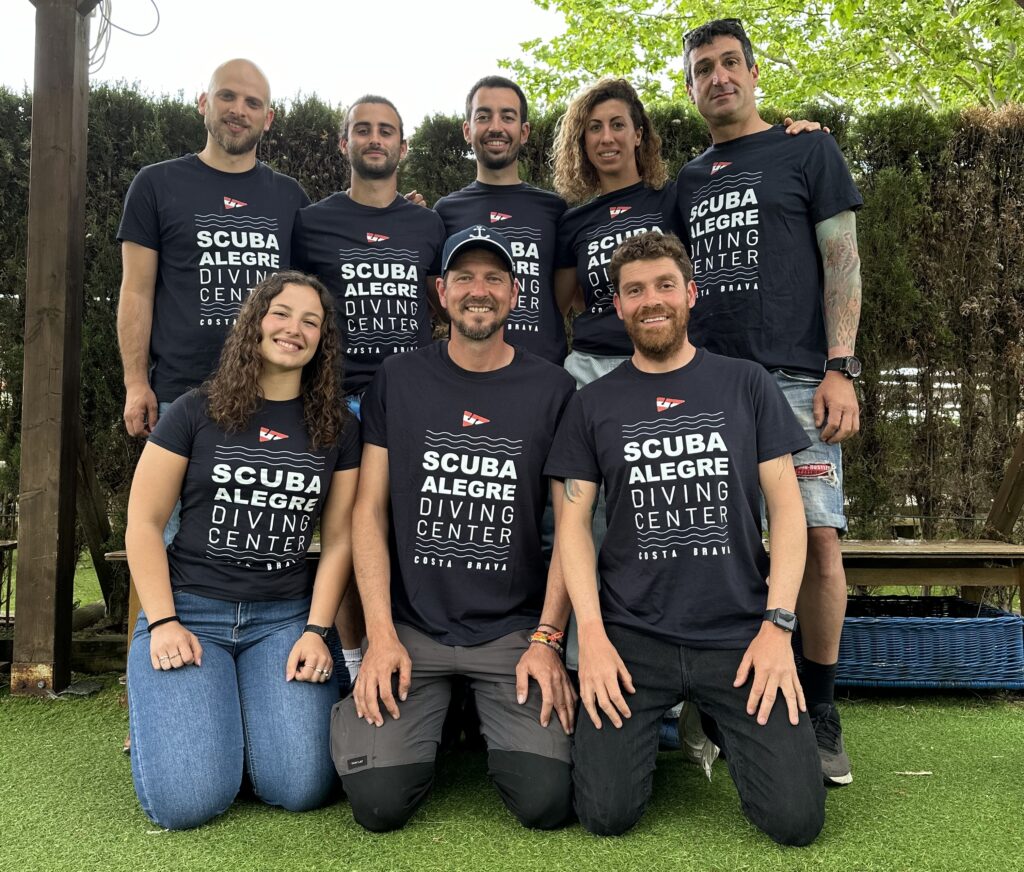
1. Where was your first ever diving experience?
My first experience was in Puerto Morelos, Riviera Maya, Mexico, in 2006. My mothers cousin owned a dive center and I contacted him, because I wanted to try diving, he offered me straight a job. He said “ I need someone to help me at the dive center. Come and try diving and see if you like it.” I went there, got hooked and did all my training from open water diver to divemaster.
2. What brought you to the Costa Brava and how long have you been there now?
The first time working along the Costa Brava was in the summer 2011, Cala Joncals. I wanted to dive somewhere other than Mexico. Friends of mine wanted to open a center for ice diving in the pyrenees and I came to help them open their center. I worked in crap de creus for an entire season and then left to the Maldives for 7 years and came back for good in the winter of 2019.
3. Can you describe the unique underwater features and topography of the diving location that make it stand out from others?
This is not a unique feature, but I would highlight that all the dives we do are at the Cap de Creus natural park. There is approx. 14 km of coastline with no buildings or residencies. The general coastal landscape is a rugged coastline made of jagged limestone, which continues on into the water, creating caverns, caves and passages. It’s incredible, not comparable to the cenotes of Mexico, but still beautiful. The dives are for all levels, the average depth being around 8 meters. The visibility is good in the summer, reaching up to 30m. There are beautiful fields of posidonia oceanica which is endemic to to Mediterranean Sea and a protected species. The area is perfect for macro nudibranch, but offers nice landscape for those wanting to take wide angle photography.
If you move slightly north to Cap de Creus you have groupers, barracudas and deeper dives with drop offs to 40m and large pinnacles.
4. What marine life is commonly found in this specific area, and are there any rare / endangered or endemic species that divers might encounter?
At the end of spring you can see mola mola and large groupers of up to 50kg, which are protected, especially around the Iles medas. Both big fish and nudibranch.
5. Are there any particular dive sites within this location that you consider hidden gems or favorites, and why?
Yes, there are two. One of my favorites is called Cala Viuda, you have lots of tunnels, swim throughs and caverns, you can stay a long time as it’s so shallow at just 12m . The landscape and contrast of light is spectacular.
Another dive site “Cap Norfeu” is the tip of the corner of the north side of Roses, you have a big migration of barracudas, big pinnacles decorated with gorgonias, it’s spectacular.
6. Can you share any memorable or unique experiences you’ve had while diving in this specific area, such as marine life encounters?
I had a really memorable moment diving in the national park. We encountered a big school of amberjacks, around 200 coming towards us and then going around us. This is something I thought you could only experience in the Pacific.
7. How do the visibility and water conditions vary throughout the year, and what’s the best season for diving in Costa Brava?
This is a very good question, on average you can have from 2m to 40m. So it varies a lot. It depends a lot on the weather forecast. With “Levante”, wind from the east, the visibility is not good. If you dive near the river, the visibility will be really affected during the rainy season, it also affects the water vis. The best month is mid-June to mid-August. In the winter you can enjoy good visibility if the sea is calm.
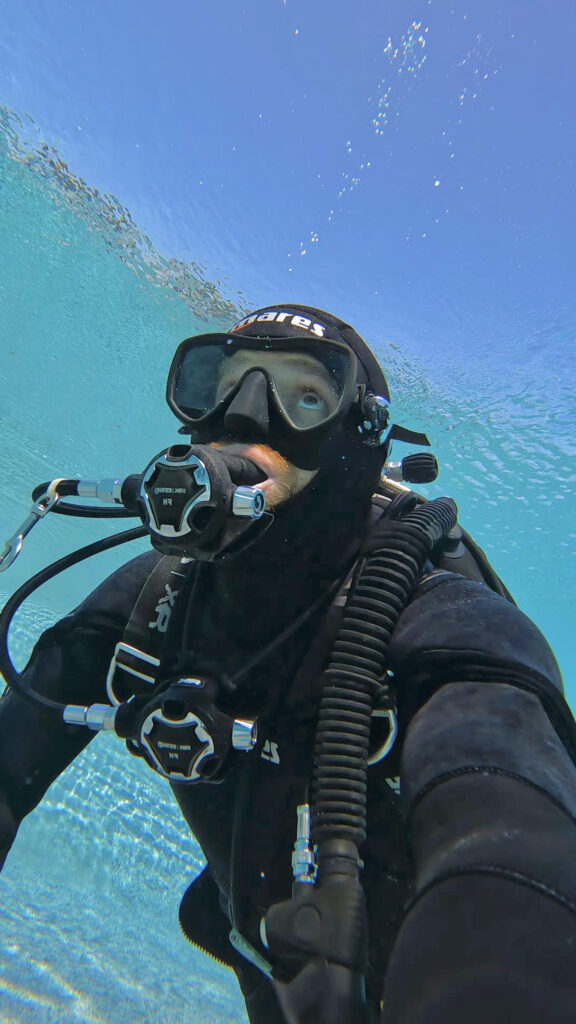
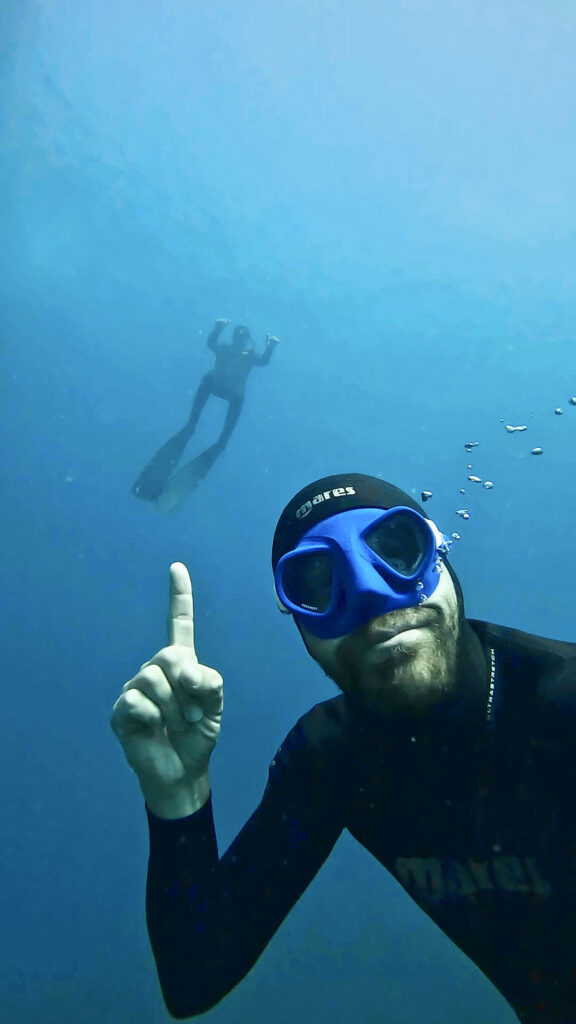
8. What safety considerations are important for divers exploring this location, and are there any specific challenges that divers should be aware of?
I would always say, to follow the ten points that SSI recommends, the responsible diver code, which is globally recommended. More specifically to this area, I would always recommend to dive with an SMB and to keep it deployed. Most dives are conducted from the coast or beach, and in the summer people use their boats, or rent jet skis, so there is a lot of boat traffic. If boat diving, always deploy an SMB before surfacing.
Also as most diving is from the shore, I would always recommend using boots and full-foot fins.
9. How has the underwater ecosystem in this location changed over the years, and what factors do you believe have contributed to these changes?
When I first started diving here a big attraction was the ice diving in the winter. Over the past few years there has been less and less days of ice. Scientists use some fish here as thermal indicators. They live in very specific temperatures and migrate south when it gets too cold, they stay longer and are even moving deeper to keep cool. There are lots of research programs in this area and you can see how just a 1 – 1.5 degree celsius in temperature already affects the marine life around here. The competition between algae and coral has also become noticeable in the last few years.
8. Have you been involved in any conservation or preservation efforts related to this diving location, and if so, what initiatives have you participated in?
We do collaborate with many conservation efforts and our dive center has the CETS – European certificate for sustainable tourism, to obtain this certificate you need to commit to a lot of things, one of them regarding the resources you have within the area you live, we collaborate with the natural parks, we organize beach and underwater clean-ups twice a year and something positive from this is that each year we find less trash. On our boat it is forbidden to bring single-use items as even if a diver plans to dispose of it properly there is always a chance it can fly into the ocean.
10. Can you provide any tips or recommendations for individuals planning to dive in this specific location, including must-see sites, preferred dive operators, and any local regulations or guidelines?
The best thing is that there are a lot of parks, so if you know that you are going diving in a natural park, check the guidelines, I would highly recommend to dive with a dive guide, who can show you the best sites and help you to enjoy the dive sites safely and while sticking to the local regulations. After all, they are the best ambassadors of the area.
We hope you enjoyed this insightful interview with Sebastian Peña Lambarri, the owner of Scuba Alegre Dive Center in Costa Brava. His expertise and passion for diving in Spain have provided us with valuable perspectives.
